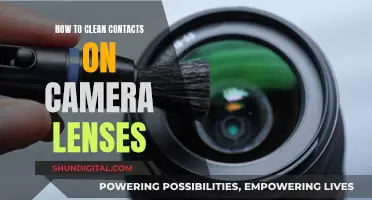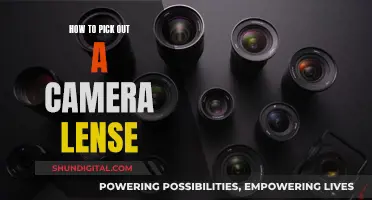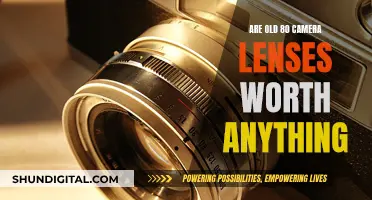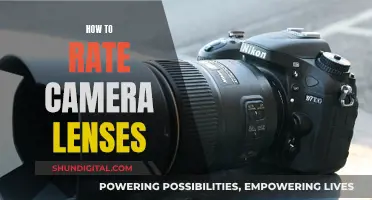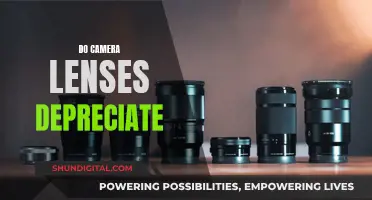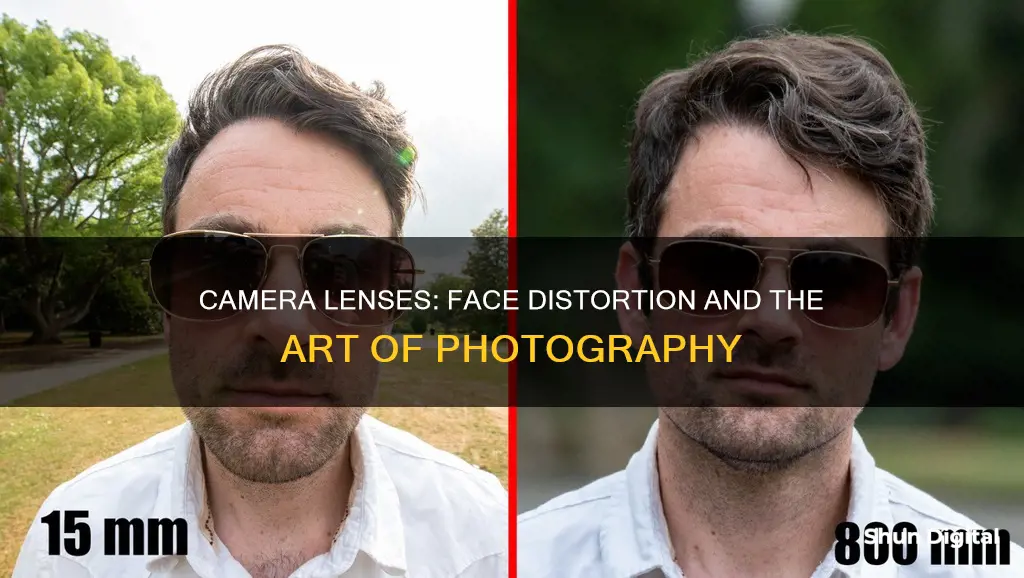
Camera lenses can distort the human face in photographs, and this distortion can be influenced by a variety of factors, including the distance of the camera from the subject, the type of lens, focal length, and the perspective from which the photo is taken.
The distance between the camera and the subject plays a significant role in facial distortion. When the camera is too close to the subject, typically in selfies, the resulting image may exhibit disproportionate features, with certain parts of the face appearing larger or wider than they actually are. This is often noticeable with the nose appearing larger in selfies due to the proximity of the camera lens.
The type of lens used also contributes to distortion. Wide-angle lenses, commonly found in phone cameras, tend to make subjects appear wider and bigger. Additionally, the focal length of the lens can affect the level of distortion, with shorter focal lengths often resulting in more pronounced deformation.
Perspective distortion occurs when the subject is too close to the camera, causing their facial features to appear stretched or distorted. This is different from lens or optical distortion, which is influenced by factors such as the lens type and focal length.
It is important to note that photographs are not exact representations of reality. They are lies or distortions of the truth, shaped by the camera's limitations, the photographer's choices, and the viewer's perception.
| Characteristics | Values |
|---|---|
| Distance from the camera | The closer the subject is to the camera, the more distorted the image will be. |
| Focal length | Shorter focal lengths capture a wider field of view and cause more distortion. |
| Type of lens | Wide-angle lenses are more likely to distort. |
| 3D to 2D | Cameras struggle to capture the true size of objects. |
| Lighting | Cameras can't adjust to lighting conditions in the same way that the human eye can. |
| Reflection | Cameras capture the reverse of what we see in the mirror. |
What You'll Learn

Distance from the camera
The distance from the camera is a crucial factor in determining the level of distortion in a photograph, particularly when it comes to facial features. This phenomenon is known as "perspective distortion" and occurs when the subject is too close to the camera. The closer the camera is to the subject, the greater the distortion, resulting in facial features appearing stretched or enlarged.
For example, in a selfie, the nose may appear disproportionately larger compared to the eyes due to its proximity to the camera lens. This effect can be minimised by increasing the distance between the camera and the subject. Moving the camera away from the subject can help reduce the distortion and create a more flattering image.
It is important to note that the lens width or focal length alone does not cause distortion. Instead, it is the combination of lens characteristics and the distance from the subject that influences the final image. Wider-angle lenses tend to require the photographer to get closer to the subject to capture the desired framing, which can then result in perspective distortion.
To summarise, the key to avoiding or minimising perspective distortion is to maintain a sufficient distance between the camera and the subject. This ensures that facial features are captured accurately and proportionally, creating a more natural-looking photograph.
Understanding Crop Sensor Camera Lenses Focal Lengths
You may want to see also

Wide-angle lenses
The misconception that wide-angle lenses distort the face likely comes from the optical defect known as radial distortion, where the image appears as if areas closer to the periphery of the lens are bent inwards or outwards. This type of distortion is different from perspective distortion, which occurs when the subject is too close to the camera and their facial features become stretched across the frame.
To avoid radial distortion with wide-angle lenses, it is important to keep important objects away from the edges of the frame, as these areas tend to be deformed. Additionally, using a camera with higher resolution can help correct any distortion by cropping out the affected areas without losing too much image quality.
When used correctly, wide-angle lenses can create unique and flattering portraits. They can make objects in the distance seem even further away, which can be used to emphasise the subject. They also allow for more of the environment to be included in the frame, adding context and visual interest to the image.
It's important to note that the distortion often associated with wide-angle lenses is not inherent to the lenses themselves but rather a result of the lens design and manufacturing process. Higher-quality wide-angle lenses can minimise or eliminate radial distortion, providing a more accurate representation of the scene.
Cleaning Camera Lenses: A Step-by-Step Guide
You may want to see also

Perspective distortion
There are two forms of perspective distortion: extension distortion and compression distortion. Extension or wide-angle distortion occurs when an image is captured from a close distance using a wide-angle lens, resulting in objects close to the lens appearing abnormally large compared to distant objects. Compression, long-lens, or telephoto distortion occurs when an image is captured from a distance using a long-focus lens, making distant objects seem approximately the same size while closer objects appear abnormally small.
It is important to note that linear perspective changes are caused by distance and not the lens itself. Two images of the same scene captured from the same distance with different lenses will exhibit identical perspective geometry. However, wide-angle lenses, due to their wider field of view, are typically used from closer distances, while telephoto lenses with narrower fields of view are used from farther away.
How Does an Eclipse Affect Camera Lenses?
You may want to see also

Optical distortion
Barrel distortion is characterised by straight lines that curve inwards in the shape of a barrel. This type of aberration commonly occurs in wide-angle lenses when the field of view is much wider than the image sensor, causing the image to be "squeezed" to fit. As a result, straight lines appear curved inwards, especially towards the edges of the frame. Barrel distortion can be minimised by using compensating optical elements, but it is nearly impossible to eliminate completely.
Pincushion distortion is the opposite of barrel distortion, with straight lines curving outwards from the centre. This type of distortion is often seen in telephoto lenses and occurs when the image magnification increases towards the edges of the frame. The field of view becomes smaller than the image sensor, resulting in straight lines being pulled upwards in the corners. Similar to barrel distortion, pincushion distortion can be reduced through the use of compensating elements, but it is challenging to eliminate entirely.
Mustache distortion, a combination of barrel and pincushion distortion, is the most severe form of radial distortion. Straight lines initially curve inwards towards the centre of the frame and then outwards at the corners, resembling the shape of a handlebar mustache. This type of distortion can be challenging to correct and may require specialised software.
It is important to distinguish between optical distortion and perspective distortion. While optical distortion is caused by the lens design, perspective distortion arises from the position of the camera relative to the subject. Perspective distortion occurs when the subject is too close to the camera, resulting in disproportionate or distorted facial features.
Do Camera Lenses Have an Expiry Date?
You may want to see also

Focal length
The distortion that occurs when photographing a face is due to perspective distortion, which happens when the subject is too close to the camera. When the subject is too close, their facial features will appear stretched across the frame. Moving the camera away from the subject will result in less face distortion.
Lens distortion, also known as optical distortion, is caused by the lens itself and is most prominent in wide-angle lenses, which can show pronounced "barrel" distortion. However, this type of distortion does not affect the subject as long as they are kept at a distance from the camera.
To summarise, it is important to understand that focal length does not distort a subject's face. The distortion that occurs is due to perspective distortion, which can be minimised by ensuring the subject is not too close to the camera.
Old Lenses, New Cameras: Is There Compatibility?
You may want to see also
Frequently asked questions
The distortion of faces in photos is caused by a combination of factors, including the distance between the subject and the camera, the type of lens used, and the perspective from which the photo is taken.
When the subject is too close to the camera, their facial features can appear stretched or distorted. This is because objects closer to the camera appear larger than those farther away, and the brain doesn't correct for this disproportion in photos as it does in person.
Wide-angle lenses, commonly used in phone cameras, can make subjects appear wider and bigger due to their broader field of view. Longer lenses, on the other hand, capture a smaller slice of the scene and can result in less distortion.
The angle and perspective from which a photo is taken can significantly impact the appearance of facial features. For example, a photo taken from below can make the subject's face appear larger or more rounded, while a photo taken from above can make the face look narrower.


